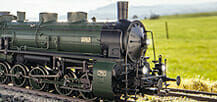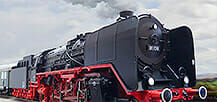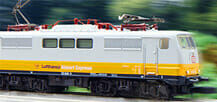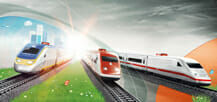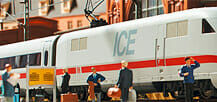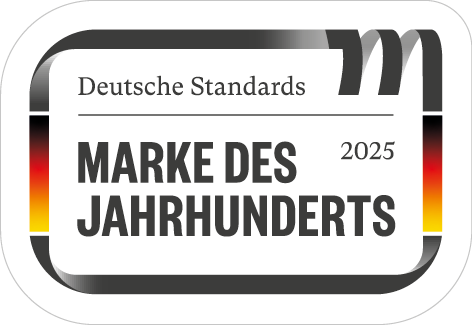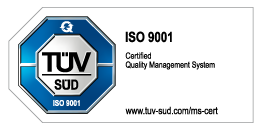"Ruhr Express Service" Commuter Car.
Prototype: German State Railroad Company (DRG) type C4i-33e, 3rd class.
Most Important Facts
| Article No. | 43109 |
|---|---|
| Gauge / Design type | H0 / 1:87 |
| Era | II |
| Kind | Passenger Cars |
Check with your local dealer Find Dealer
Highlights
- Working car.
-
Product description
Model: Add-on car for the 43108 car set. The car has a built-in function decoder with a sound effects module and marker lights. Detailed construction with numerous separately applied handrails and ladders. 2-color paint scheme for the car body. Imprinted train destination signs. The car is ready for installation of 7319 current-conducting couplings or 72020 current-conducting couplers. The marker lights will work in conventional operation and can be controlled digitally. The sound effects module for the conductor's all aboard departure whistle can be controlled digitally with the 6021 Control Unit. Length over the buffers 25.5 cm / 10-1/16".
The address and the function assignments on the decoder are particularly designed for use with locomotive item no. 37073. This car can also be used with no limitations with other digital locomotives.
Find more Märklin explanation videos on our YouTube Channel
Spare parts for our articles can be found here in our spare parts search.
-
Publications
- New items brochure 2003 - Product programme 2003/2004 - Product programme 2005 - Product programme 2006
-
Prototype information
The increase in the population in the Ruhr and Saal areas led to a demand for fast connections between cities as early as the provincial railroad period. Different studies were commissioned and carried out. The actual breakthrough did not occur until 1932 when the "Ruhr Express Service" was placed into service with a total of 32 trains between Essen and Dortmund. The train routes were continuously expanded and extended to Cologne, Mönchengladbach and Wuppertal-Vohwinkel. In addition to different powered rail cars, the 4-axle "English design" compartment cars turned out particularly well in this service. The attractive paint scheme became a trademark symbol for this regularly scheduled express passenger service. The dense sequence of stations, most of them only a 30 to 60 second stop, demanded locomotives that could accelerate quickly. The class 78 met this equirement as if it were child"s play. The additional sign mounted on the smoke box was another indication of the special use for these units.
